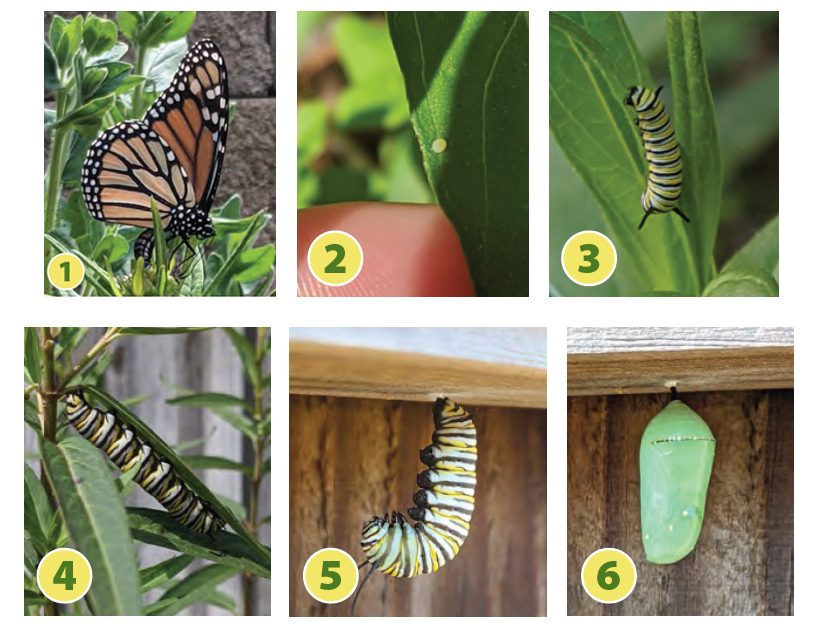Saving the monarch butterfly - Pollinator Week is June 19-25 - Story and photos by Casey Shepard
As Pollinator Week approaches, I wanted to highlight one iconic species — the monarch butterfly — and provide practical tips for supporting it and other pollinators in your own yard.
First, let’s briefly look at the monarch’s lifecycle. Female monarchs lay eggs on milkweed, plants in the Asclepias family (see photos 1 and 2). After a few days, out of the egg hatches a tiny caterpillar that begins munching away, often first on its own eggshell and then the host plant. These milkweeds are the sole food source for the monarch caterpillar as it continues to eat and grow for about two weeks (see photos 3 and 4). Prior to the fifth and final instar, or molt, the caterpillar attaches itself onto the underside of a surface, and it can be creative. I have found them on the underside of leaves, roof overhangs, my fence (see photo 5), and even inside a watering can! The “cat” will then spend another week or two in a chrysalis (see photo 6) metamorphosing into a butterfly.
Each spring, adult monarchs migrate north as far as Canada, and then, in the fall, return south to Mexico, where most overwinter during the colder months. Arkansas lies directly in both migration flyways, so Arkansans can be active participants in helping monarch populations, which are severely in decline.
HERE’S HOW:

- Plant milkweeds and nectar sources that are native to your area. In general, the following few should be a good start for creating a pollinator garden:
- Butterfly milkweed;
- Lance-leaf coreopsis;
- Purple coneflower;
- Black-eyed Susan; and
- Wild bergamot/beebalm.
- Reduce pesticide use. If you must spray, avoid doing so on windy days and during migration seasons, and be selective about where you apply them.
- Explore online resources like arkansasmonarchs.org, xerces.org and pollinator.org.
- Share your efforts! Post a sign in your garden to let others know what you are doing. Certify your habitat through the National Wildlife Federation at nwf.org, and add your garden to the Homegrown National Park map at homegrownnationalpark.org.
Lastly, be patient and not discouraged. It takes time for plants to establish, and monarchs have many predators. Only about 10% of eggs survive to an adult. You will likely see some that do not make it, but your efforts will support monarchs and your local ecosystem — so have fun and enjoy!
Casey Shepard is an environmental engineer for Arkansas Electric Cooperative Corporation and is a Sustainability Excellence Associate.
